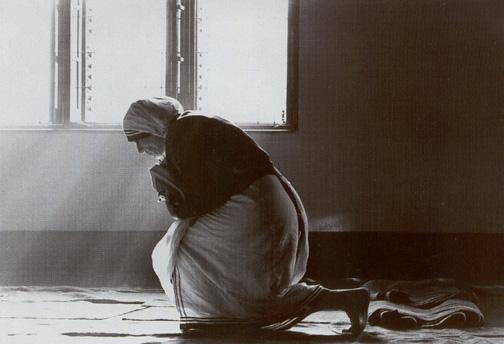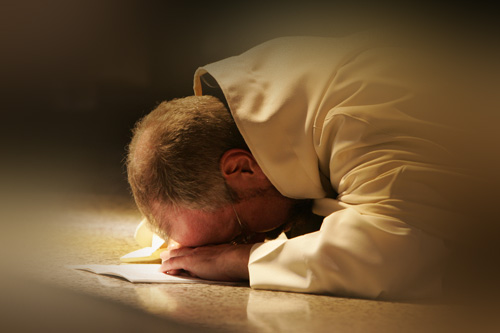 At its heart, the Eucharist is a sacrament of communion, bringing us closer to God and to our brothers and sisters in the Body of Christ. If we live the fruits of the Eucharist in our daily lives, we will fill our families and our communities with the life-giving qualities that the Liturgy brings: hospitality, concern for the poor and vulnerable, self-offering, and thanksgiving.
At its heart, the Eucharist is a sacrament of communion, bringing us closer to God and to our brothers and sisters in the Body of Christ. If we live the fruits of the Eucharist in our daily lives, we will fill our families and our communities with the life-giving qualities that the Liturgy brings: hospitality, concern for the poor and vulnerable, self-offering, and thanksgiving.
An ancient saying in the Church reads “lex
orandi, lex credendi,” meaning that the law of prayer is the law of faith. More loosely: as we pray, so we believe. To that we might add lex
vivendi, meaning that as we pray, so we believe, and so we live. In the third edition of the Roman
Missal, the bishops and translators have taken great care to ensure that the prayers accurately and fully reflect the mysteries of our faith. Th us, the words that we pray in each liturgical celebration will help to form and strengthen our understanding of the faith.
However, if the effects of the Liturgy stop at the doors of the church, we have not made our prayer and our faith part of our law of living. The Catechism
of the Catholic Church (CCC) teaches that the Eucharist helps us to grow in union with Christ, avoid sin, increase in charity, strengthen communion with our brothers and sisters, and recognize Christ in the poorest and most vulnerable members of society (see CCC, nos. 1391-1397). But what does that mean in daily life?
LIVING A LIFE OF PRAYER
Our prayer lives should not be limited to a single hour on Sunday mornings. In fact, the richer our prayer lives are throughout the week, the more fully we will be able to enter into the Sunday celebration of the Eucharist. Here are some ways to make your daily life more prayerful:
·
Try attending daily Mass at least once a week. Your parish may have an early morning Mass, or a church near your job may offer a lunchtime Mass.
Stop in a church before or after work or on your lunch hour for fifteen minutes of quiet prayer before the Blessed Sacrament.
·
Make it a practice to say grace before every meal—even if you are eating in the car.
·
Schedule time for family prayer at least once a week.
This prayer can be as simple as saying the
Our Father or a decade of the rosary together.
·
Take time during the week to read or listen to the readings for the upcoming Sunday. The readings are available online (in print and audio) at www.usccb.org/nab.
·
Begin your day with a brief prayer of thanksgiving to God, offering your day to him.
·
End your day with an examination of conscience, looking at your successes and failures in what you have done or what you have failed to do. If you are aware of serious sin, receive the Sacrament of Penance before you receive Holy Communion again.
LIVING
A LIFE OF LOVING SERVICE
Celebrating the eucharistic Liturgy and receiving Holy Communion should strengthen us to conform our lives more closely to the example of Christ. As Jesus knelt before his Apostles to wash their feet (see Jn 13),
giving them an example of humble service, so must we who bear the name Christian live our lives in service to our brothers and sisters.
To help us in this endeavor, Church Tradition has identified works of mercy. These fourteen practices demand great sacrifice and generosity, but they also draw us more deeply into conformity with the Lord. Focusing on one of these works each week may be a practical way to integrate them into our personal, family, and parish lives.
Corporal
Works of Mercy
·
Feeding the hungry
·
Sheltering the homeless
·
Clothing the naked
·
Visiting the sick
·
Visiting the imprisoned
·
Giving drink to the thirsty
·
Burying the dead
Spiritual
Works of Mercy
·
Converting sinners
·
Instructing the
ignorant
·
Advising the doubtful
·
Comforting the
sorrowful
·
Bearing wrongs
patiently
·
Forgiving injuries
·
Praying for the living
and dead
Our parishes and civil communities offer
numerous opportunities to live out these works, from assisting with religious
education classes or volunteering at a food bank to encouraging our legislators
to put forward policies that protect the life and dignity of each person. As we
grow in conformity to Christ, we see more clearly that all people are made in
the image and likeness of God (see Gn 1:26) and so have an inherent value and
dignity. By helping to build a more just and compassionate society, we act as Christ’s
Body in the world.
IT
ALL COMES BACK TO THE EUCHARIST
Living the Christian life is not easy.
“What material food produces in our bodily life, Holy Communion wonderfully
achieves in our spiritual life. Communion with the flesh of the risen Christ .
. . preserves, increases, and renews the life of grace received at Baptism.
This growth in Christian life needs the nourishment of Eucharistic Communion,
the bread for our pilgrimage” (CCC, no. 1392). And so, each Sunday, we return
to the Eucharistic table, bringing all our efforts of the previous week, the good
and the bad, the successes and the failures, the joys and the sorrows. We
gather with our brothers and sisters in the Lord and, together with our priest,
we join these efforts to the perfect sacrifice of Christ, asking that God will
receive what we offer back to him in humble thanksgiving. The Catechism explains
it as follows:
The
Church which is the Body of Christ participates in the offering of her Head.
With him, she herself is offered whole and entire. She unites herself to his
intercession with the Father for all men. In the Eucharist the sacrifice of
Christ becomes also the sacrifice of the members of his Body.
The
lives of the faithful, their praise, sufferings, prayer, and work, are united
with those of Christ and with his total offering, and so acquire a new value.
Christ’s sacrifice present on the altar makes it possible for all generations
of Christians to be united with his offering. (CCC, no. 1368)
Then, strengthened by Holy Communion, we
are once again sent forth into the world to glorify the Lord in our lives.
REFERENCE
Catechism of the Catholic Church (2nd
ed.). Washington, DC: United States Conference of Catholic Bishops, 2000.
Excerpts from the Catechism of the Catholic
Church, second edition, copyright © 2000, Libreria Editrice Vaticana–United
States Conference of Catholic Bishops, Washington, D.C











